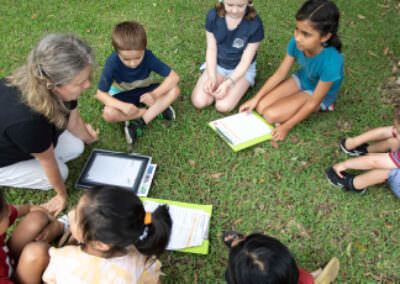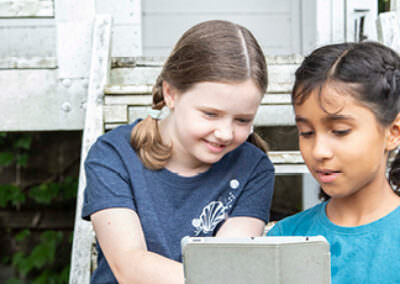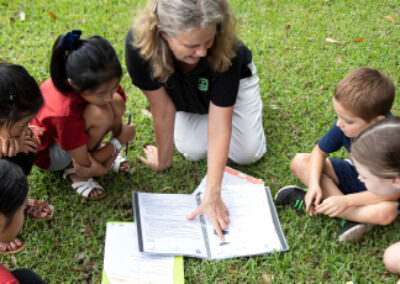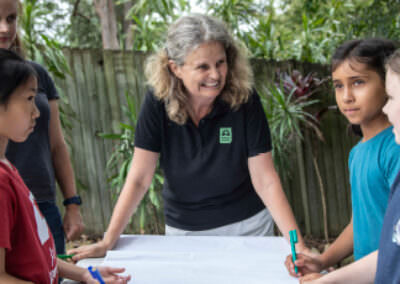
Creating a frog-friendly habitat: research
Time Allocation: 40-60 minutes*
Activity Level: Moderate, Complex
Introduction
Most young learners will come with some prior knowledge of frogs. Upon completion of this learning activity, they will have developed a basic, moderate or complex understanding of a local frog’s specific survival needs, depending on their stage of learning. The research and planning phases are essential to creating a suitable frog habitat.
*Time allocation will be dependent on site selection and travel time. Additional time may be spent in consultation with your local Landcare group, council, or indigenous plant nursery.
Checklist
Instructions
 STEP 1
STEP 1
Tuning in
Before we design our frog-friendly habitat, we first need to find out: what do we think we know about frogs?
Discuss and brainstorm in groups so the information is visible for all to see, e.g. poster paper, whiteboard, devices or interactive whiteboard.
Do we need to fact-check any of these statements? Get the children to verify any statements that they may not be certain of by gathering supporting information.
 STEP 2
STEP 2
Delving deeper
Are there gaps in our learning?
What do we need to know about frogs that is essential to informing our frog habitat design and construction so it is suitable for our local frogs?
What questions do we still have? Discuss and brainstorm in groups.
Undertake further research.
 STEP 3
STEP 3
Honing in
It is essential to understand the specific needs of frogs local to your area. Use a digital or print frog guide to identify frogs local to your area.
Find out the frogs: diet, distribution and habitat, lifecycle, call and distinguishing characteristics.
Are there experts who can help with your investigations? Connect with your local Landcare group, environmental community group, local council ranger or Indigenous Elders.
Use the activity sheet to help children record their learnings.
 STEP 4
STEP 4
Processing and applying learning
How are we going to use this prior and new found knowledge to create a suitable habitat for local frog(s) species?
Discuss the next steps, this is the design phase.
Extension Activity
Read the Dreaming story of Tiddalik the frog (this can be found in print or online). This story has important messages about the impact of our choices. How might this be relevant today with respect to humans and the environment?
Use the Australian Museum’s FrogID mobile app, to discover which frogs live around you, and can also be used contribute to the Australian database of frogs as citizen scientists.